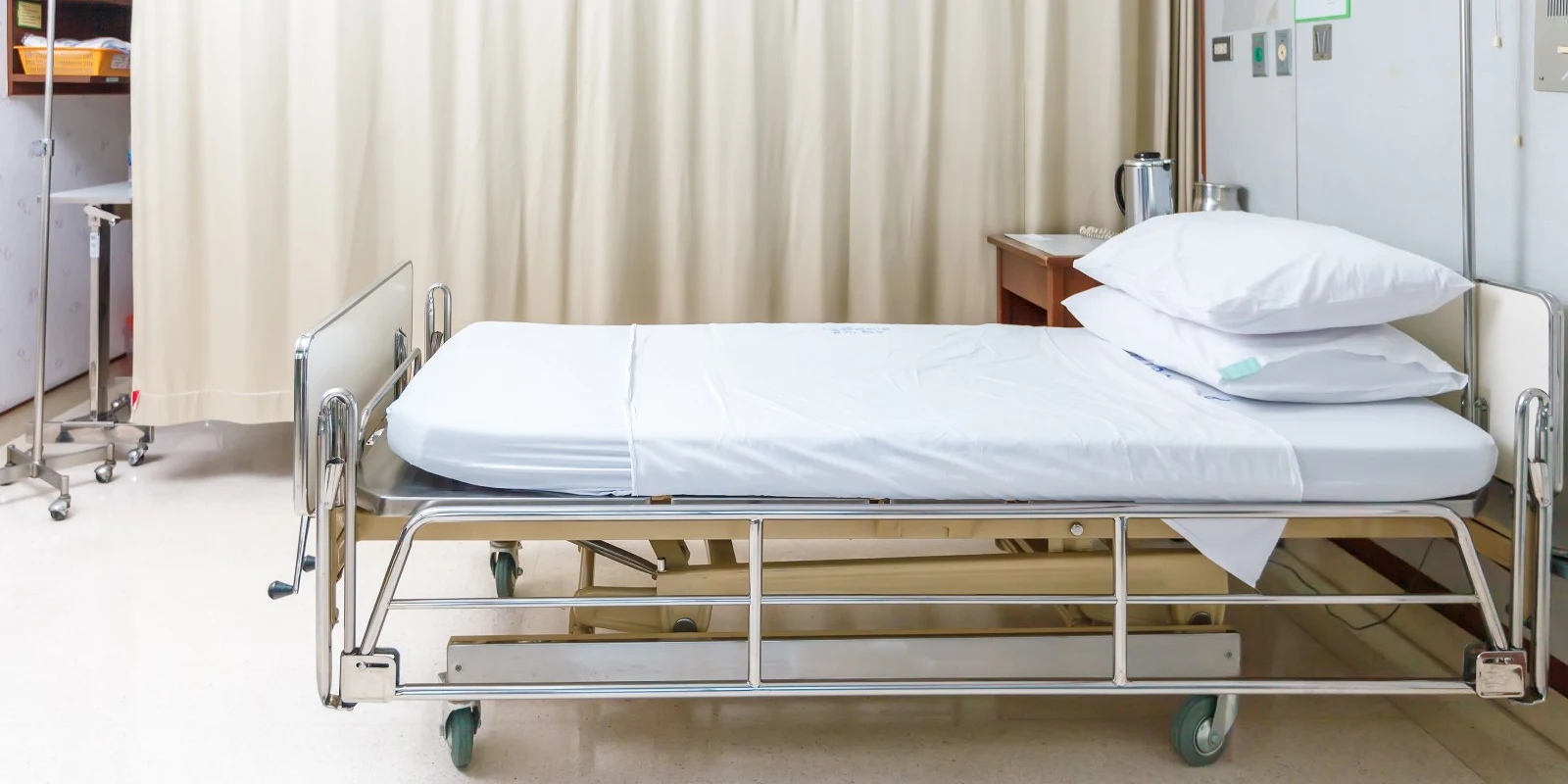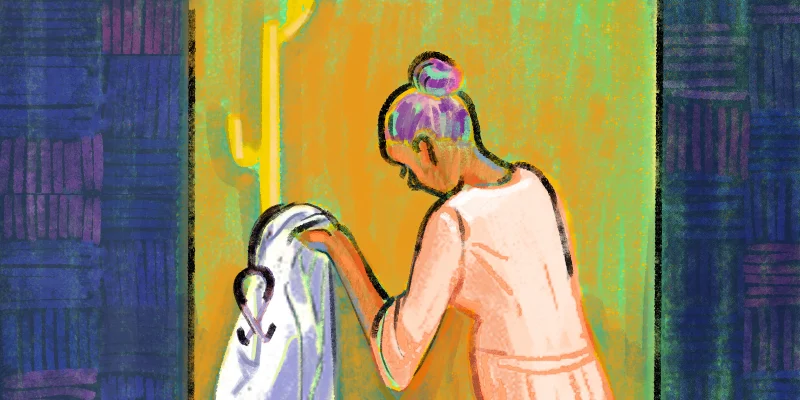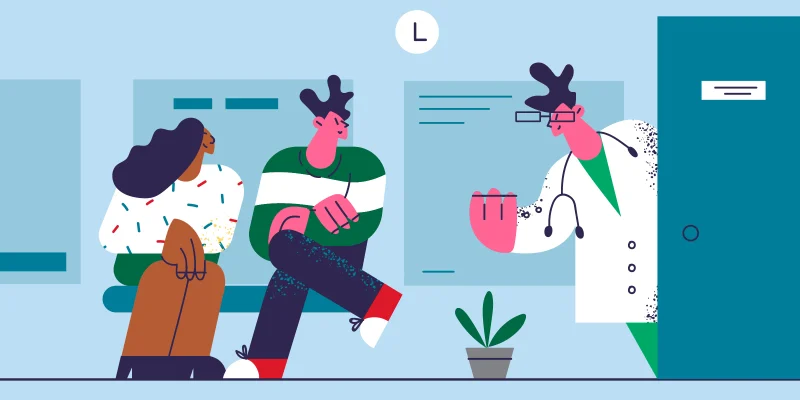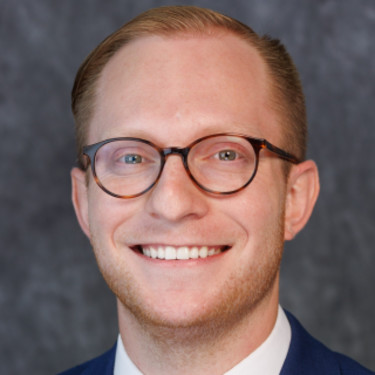
The fluorescent lights flash, jolting me from the first decent sleep I’d had in days. A door smacks the end of my bed. The white coats crowd in, gathering at my feet. My blankets are torn away. I shiver. My gown is lifted, exposing a foot-long incision, still raw and stapled.
Bleary-eyed, I squint at the clock. 5:45 am.
Rounds.
“The wound is healing well,” he announces. The gaggle of residents and students behind him nod. He pokes me with icy fingers.
“Any pain?”
“What?” I mutter, still adjusting to the bright cold.
“Pain. Do you have any?”
“Um, well not since I had my Toradol a little while ago.”
“Good.”
There are more nods.
The fellows and residents had introduced themselves once during my post-operative stupor, but never stated their names again. They didn’t use mine. I was called “retroperitoneal liposarcoma status-post resection,” or “Room 8”. So in my head I gave the rest of the team nicknames — Nervous Nellie, Cold Cal, Quiet Kelly, Awkward Andy, Handsome Hugh.
The group leaves, again bumping the end of my bed, sending repeat pangs through my weary middle. My blankets are left at the end of the bed. I can’t bend down to reach them. I stare up at the lights, still on. At least I have my morphine pump. I press the button a few times, hoping it will ease me back into slumber.
This was the routine each morning of the seven I spent in the hospital learning what it was to be a patient, years before I would learn to care for patients myself. Diagnosed with a rare cancer while studying for my MCAT exam, I entered medical school with a hefty dose of clinical experience — just from a different end of the scalpel. My first rounds were as a specimen — meek, observed, prodded — spoken of, not to.
Years later as a third year medical student, I began to understand some of why rounds on me had been curt and impersonal — little time before cases in the OR, new rotating students every week, dozens of other patients to see.
With every rotation, I saw how the character of rounds change based on specialty (the curt rounds of trauma surgery, the contemplative rounds of neurology), location (a quick huddle in the ED, exhaustive teaching rounds of internal medicine), day of the week (the efficiency of a Monday, the doughnuts stops of a Saturday), patient load (brief while covering a service at night, more attentive in the morning), and attending manner (interrogatory, warm, technical, humorous). I began to craft my own style, the frustrating memory of rounds on myself still fresh. Now at the side of the bed instead of in it, I wanted to create rounds that offered a more healing experience.
Once defined by the doctor’s knock on your front door, overcoat and quintessential black bag in hand, there for a languid visit, rounds now go way beyond the bedside to serve myriad purposes. While seeing each patient, a physician and her team must review test results, finish charts, place orders, decide on discharge criteria, communicate plans with nurses, share important information with families, and to assess a patient’s wounds, pain or progress. In teaching hospitals, they are partly performance — the stage on which to model communication, teach pathophysiology, debate ethics and demonstrate subtle physical exam findings for impressionable doctors-in-training. Somewhere in all this, the patient can get lost. With so many people to please and boxes to check, no wonder rounds often fall short of meeting everyone’s needs — even those at their heart — the patient.
Perhaps with some creativity and flexibility, we could transform rounds, creating a ritual that makes patients feel cared for while getting the other necessary work done. By taking a critical look at what tasks must be incorporated into rounds and which can be done in other ways or moments, we can peel away the layers to finally find the core — the relationship of patient and doctor at the bedside.
A few simple measures can transform the patient’s experience. Someone can apprise the patient of our arrival time, giving them a chance to prepare questions or call family members who they want involved. We can introduce ourselves every day, and call our patient by his name instead of his age, gender, and diagnosis. A camp stool brought with us can ensure we have a seat by the bed. Statements like “We have spent time reviewing your records and discussing your cancer in our weekly meeting” can let the patient know she is attended to outside of the 5 minutes of rounds. Technical tasks like order entry and charting can be delegated or occur outside the room. Focused repeat rounds later in the day can give moments for clinical teaching. Our methods can be flexible — adapting to changing volumes, emergencies or team structures — while maintaining care of the patient as central.
Amidst the clutter of pages, EMRs, preauthorizations, and satisfaction surveys we can fight to focus on the patient. It can start as simply as entering quietly, turning the lights on gradually and tucking the blankets back in.
Julie Bruckner is a pediatrician and a 2018-2019 Doximity Author.







